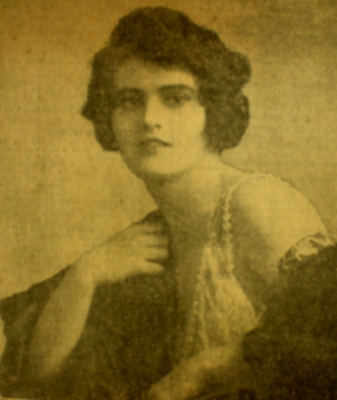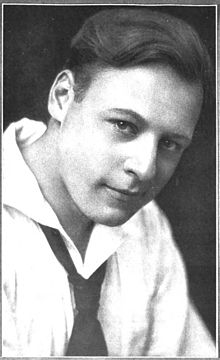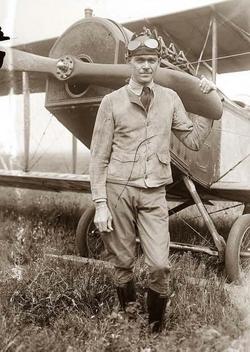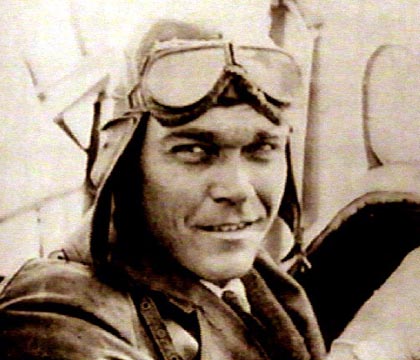I was trying to save this one for a little later because I needed to wrap my head around who I was really covering. When I looked up one name, I wouldn't get any information, but when I looked up the other, I would get a ton of information. Then the names were sometimes linked and sometimes sounded like they were describing two different people. So, I had to do a bit more homework to finally get it together that Elsie Mackay and Poppy Wyndham were in fact the same person. I should have done her about the same time as I did Ormer Locklear since they were both known for their airplane stunts rather than their acting talents.
Elsie appeared in her first film, Snow in the Desert, in 1919. She had been quite a well known stage actress before appearing on the screen. She seemed hell bent to do anything and everything her father did not want her to do. James Mackay was President of the Bengal Chamber of Commerce, and members of council for various government agencies in India. Having a daughter who was an actress and an aviatrix was not what he had in mind. Because of her father's objections, Elsie appeared in films under the stage name Poppy Wyndham.
Her film career only consisted of eight films: her film debut mentioned above, A Great Coup (1919), The Town of Crooked Ways (1920), The Tidal Wave (1920), Nothing But the Truth (1920), Many a Slip (1920), A Son of David (1920), and A Dead Certainty (1920). All of her films were made in the United Kingdom.
The year 1920 was a busy one for Elsie. It was the year she made most of her films and it was the year she got her pilot's license, being one of the first English woman to do so. And it should be no surprise that since she was known to drive her Rolls Royce at high speeds and gallop away on her horses that she would want to do some really fancy stunts in an airplane. Once while performing a loop in the air, her safety harness broke and she had to hold on to the plane while her body swung outside of it. Good lord!
Elsie had set her goals sky high (get it?) with her pilot's license, she wanted to become the first woman to fly across the Atlantic Ocean. She chose Walter G.R. Hinchcliffe to be her fellow pilot on her flight.
On March 13, 1928, Elsie and Hinchcliffe took off in their airplane, named Endeavour. Considering what they were attempting to do, the fanfare for the event was pretty small. Elsie had registered under the name 'Gordon Sinclair' so no one really knew who it was in the pilot's seat. She had threatened to sue if reporters were to leak the story to the newspapers because she didn't want her family to know she was going to attempt the flight. Everything seemed fine on take off and the plane was reportedly spotted twice in the air, but they disappeared soon after. It is assumed they crashed somewhere in the Atlantic, but nothing else is known. The only evidence could be some plane parts that washed up on the shores of Ireland eight months after the plane took off.
When it comes to discussing her personal life, it once again gets a little confusing. I first read about a marriage to an actor named Dennis Wyndham, who she met while working as a nurse during WWI. They were reportedly married around 1917, but the marriage was later annulled.
Even though it has been years and years since Elsie has disappeared, her family and country made sure that her memory lived on. A church in Scotland has a stained glass window commemorating her, thanks to her father owning the estate. They also planted rhododendrons so that they spelled out "Elsie" and even though they are not kept up all the time, they are still there. She also had a street named after her and her family set up a fund that helped pay off some of Britain's national debt.
"Lord Inchcape was proud of his clever daughter and she was said to adore him but not without some awe. She was of a fearless and sanguine disposition, and it is believed she looked forward to being able to cable him from America: 'Am here. Flew across with Hinchcliffe.' She felt sure he would be proud of her achievement when he learned she was safe." ~~ Ellensburg Daily Record - March 15, 1928





































